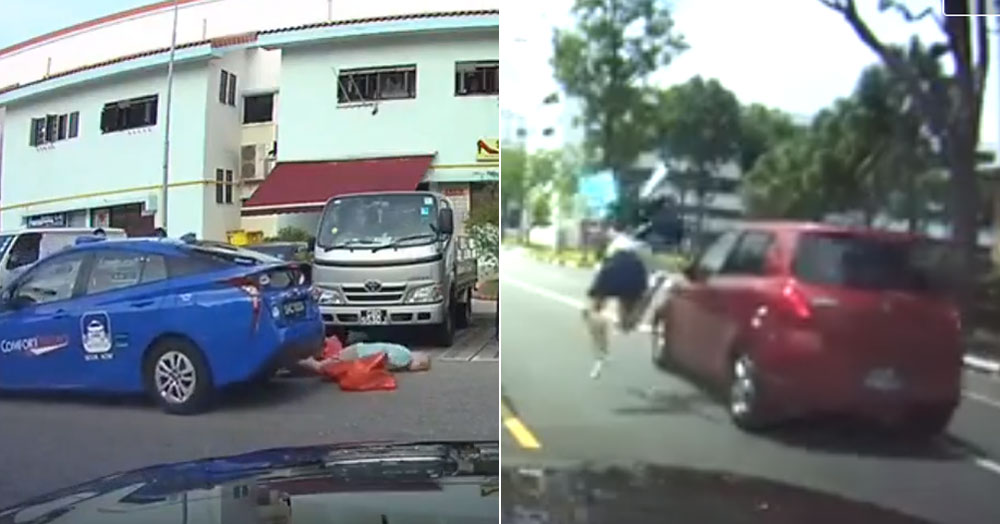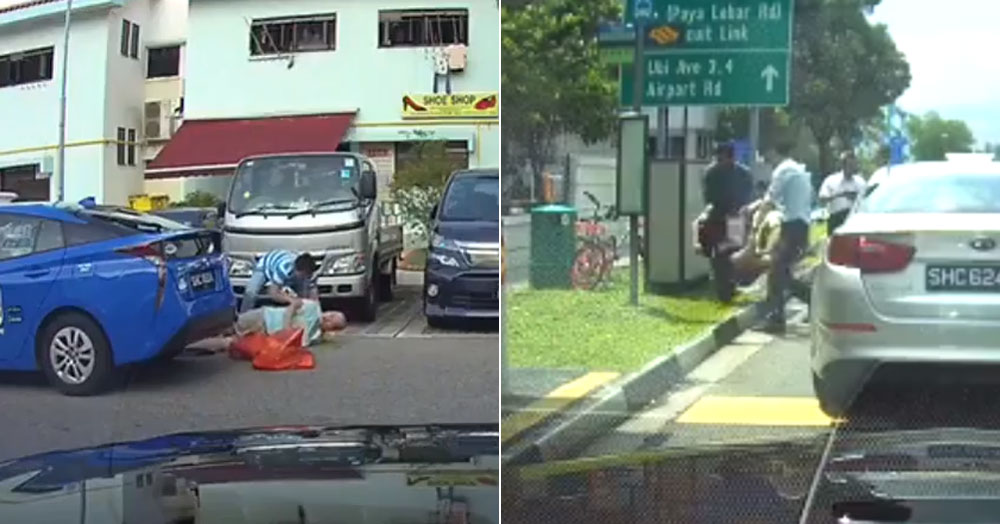Two injured pedestrians were seen on video being physically moved after they were hit by vehicles.

Teenager hit while crossing road
A 16-year-old teenager in school uniform was hit by a car while crossing a road in Ubi on Monday, April 16.
She was looking left for cars but was hit by a car from the right.
Two people who stopped to check on her carried the student to the side of the road as her body remained limp.
She was later conveyed to the hospital in a conscious state.
Elderly man hit by reversing taxi
In a video uploaded online on the same day, a 75-year-old man was seen being hit by a reversing taxi while walking in a car park in Eunos on Sunday, April 15.
He fell down hard and appeared to have hit his face on the ground and passed out.
His body was limp when he was flipped over by a man who appears to be the taxi driver.
The elderly man was taken to the hospital in a conscious state.
Should victims have been moved?
Now the important question: Should the victims in the two incidents above have been moved so quickly before the arrival of Singapore Civil Defence Force personnel at the scene?
The general rule of thumb is that if the victim is unconscious, he or she should not be moved.
This is to prevent inflicting any further injury to their possibly broken bodies. For example, broken ribs can puncture lungs if the body is lifted or made to lean on one side.
Plus, a person in shock might not be able to respond appropriately to the pain experienced, so it might be difficult to gauge the full extent of any injury.
Moreover, moving any victim from where he or she landed should only be done if not moving the victim poses a greater danger. For example, if the victim has fallen onto the train tracks or into the water.
Always check if the victim is conscious
And the other rule of thumb is to check if the victim is conscious first, before attempting to remove him or her from the spot.
If there is no clear immediate danger, the victim should be left to recover from the shock before moving him or her from the ground.
And if the victim is not even able to move by himself or herself without help, it is not advisable for third parties to move him or her.
Call for an ambulance
In the aftermath of an accident that is similar to these two examples above, it is best to call for an ambulance and wait for professional help to arrive.
If you like what you read, follow us on Facebook, Instagram, Twitter and Telegram to get the latest updates.
